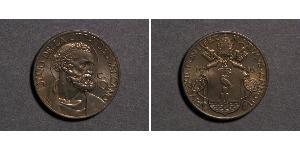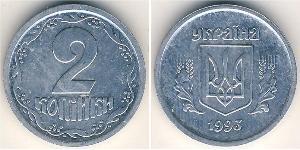(sold for $27.0)
1557, Liege Bishopric, George of Austria. Beautiful Bronze Medallet (Jetton). R!
Condition: VF+
Mint Period: 1544-1557
Denomination: Small Medal (Jetton)
Ruler (Prince-Bishop): George of Austria (1544-1557)
Diameter: 21mm
Material: Bronze
Weight: 6.44gm
Obverse: Nimbate and togate bust of the Virgin Mary right.
Legend: . S . MA - RIA .
Reverse: Mitred and draped bust of Saint Lambert (protector of the Liege Bishopric) left.
Legend: . S . LAMBE - RTVS
The Prince-Bishopric of Liège was a state of the Holy Roman Empire in the Low Countries in present Belgium, which was ruled by the Bishop of Liège as a prince within the Empire. The ecclesiastical domain of the bishop was much larger than the domain which he controlled as a prince. The bishops of Liège acquired their status as a Prince-Bishop between 980 and 985 when Bishop Notger, who had been the bishop of Liege since 972, received secular control of the County of Huy from Otto II, Holy Roman Emperor. The Prince-Bishopric belonged from 1500 on to the Lower Rhenish–Westphalian Circle. Its territory included most of the present Belgian provinces of Liège and Limburg, and some exclaves in other parts of Belgium and the Netherlands. It briefly became a republic (the Republic of Liège) from 1789 to 1791, before reverting to a Prince-Bishopric in 1791. The role of Prince-Bishop permanently ended when the state was annexed by France in 1795. In 1815 it became part of the United Kingdom of the Netherlands, and in 1830 it was within the part of that kingdom which split off to become Belgium. The bishopric of Liège was never part of the Dutch Seventeen Provinces or the Spanish and Austrian Southern Netherlands, but from the 16th century onwards, its politics were strongly influenced by the dukes of Burgundy and later the Habsburgs, under the sovereignty of the family de la Marck (Dutch: van der Marck). In 1559, its 1636 parishes were grouped in eight archdeaconries, and twenty-eight councils, chrétientés (deaneries). The most important cities (bonnes villes) of the bishopric were: Liège, Beringen, Bilzen, Borgloon, Bree, Châtelet, Ciney, Couvin, Dinant, Fosses-la-Ville, Hamont, Hasselt, Herk-de-Stad, Huy, Maaseik, Peer, Sint-Truiden, Stokkem, Thuin, Tongeren, Verviers, Visé and Waremme. The city of Maastricht fell under the joint jurisdiction of the Prince-Bishop of Liège and the Duke of Brabant (later the States-General of the United Provinces). The second city of the prince-bishopric thus kept its status aparte throughout the ancien régime.
em>.
George of Austria (Gent, 1505 - Liege, May 4, 1557), was Prince-bishop of Liege between 1544 and 1557. He was an illegitimate son of Maximilian I, Holy Roman Emperor and Margaretha of Edelsheim. He became Bishop of Brixen (Tyrol) between 1525 and 1537 and Archbishop of Valencia between 1538 Ã 1544. In 1544 he became Prince-bishop of Liege by the influence of his nephew Charles V, Holy Roman Emperor, a post he held until his death. George strongly opposed any French influence in the Prince-Bishopric of Liege, thus maintaining the strong grip of the Habsburgs, who controlled all surrounding lands. In 1554, he was faced with a French invasion under King Henry II of France.
Saint Lambert (or Landebertus) (c. 636 – c. 700) was the bishop of Maastricht (Tongeren) from about 670 until his death. Lambert was from a noble family of Maastricht, a protégé of his uncle, Bishop Theodard of Maastricht. When Theodard was murdered soon after 669, the councillors of Childeric II made Lambert bishop of Maastricht. Lambert was related to Hugobert and Plectrude, Pepin of Heristal's lawful wife and thus an in-law of hereditary mayors of the palace who controlled the Merovingian kings of Austrasia. After Childeric was murdered in 675, the faction of Ebroin, majordomo of Neustria and the power behind that throne, expelled him from his see, in favor of their candidate, Faramundus. Lambert spent seven years in exile at the recently founded Abbey of Stavelot (674–681). With a change in the turbulent political fortunes of the time, Lambert was returned to his see.

|
Posted by:
anonymous 2014-03-17 |
1 Ducat Austria-Hungary (1867-1918) Gold Franz Joseph I (183 ...
group has 22 coins / 12 prices
⇑
1 Denga Russia Copper Nicholas I of Russia (1796-1855)
group has 5 coins / 4 prices
⇑















-300-150-WL5_AAEBP_sAAAEjIkLAPfNR.jpg)








